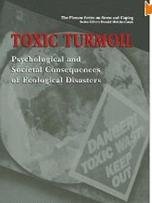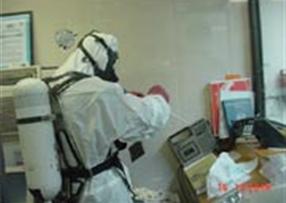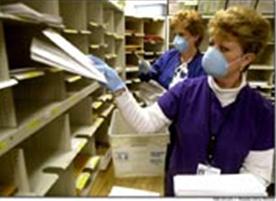Toxins, unseen chemical, biological, and radiological threats often create the greatest dread within the psyche. Invisible stressors are impossible to see, difficult to detect and it is often unclear how to protect oneself. Widespread panic and confusion may result when a group fears toxic exposure. Psychological contagion and dread commonly effect large groups of people following toxic exposure of only a small group, often overwhelming the medical system as “worried well” come in with complaints and fears of symptoms of toxic exposure.
Posttraumatic responses to toxic exposure are unique including the concept of the “flash forward” (see Speckhard, 2001). Traumatic flash forwards differ from flashbacks in that the individual has a traumatic arousal response to recalling the event or thinking or talking about exposure in the past but this does not include re-experiencing the past event as much as envisioning the self in the future – poisoned or significantly harmed in some way by the toxic exposure –dying or sick from cancer, witnessing one’s child sick or harmed by the toxin, losing one’s home as a result of contamination, etc. In some cases these fears are realized when the individual becomes sick from either the toxin or more often by the distress caused by fears following exposure (psychosomatic illnesses) or if the toxic exposure is deemed by authorities to be or is indeed significant enough to require relocation or other significant life changes which also contributes to traumatic stress responses.
Publications:
Anne Speckhard Psycho-Social & Physical Outcomes of Technological Disaster: Information as a Traumatic Stressor in Norma Berkowitz ed. A Chernobyl Reader, University of Wisconsin Press 2005.
Speckhard, A. “Mental Health Effects of Technological Disaster: The Psychological Aftermath of Toxic Contamination” in Living in the Aftermath of Chernobyl: A Reader Norma Berkowitz, Ed.(2001)
Speckhard, A. “Voices from the Inside: Psychological Responses to Toxic Disasters” in Toxic Turmoil: Johan Havenaar, Evelyn Bromet & Julie Cwikel, Eds. (pp 217-236). New York: Kluwer Academic/Plenum (2002)
Kronik, A., Akhmerov, R. & Speckhard, A. “Trauma & Disaster as Life Disrupters: A Computer Assisted Model of Psychotherapy Applied to Adolescent Victims of the Chernobyl DisasterProfessional Psychology: Research and Practice Vol 30 (6) pp. 586-599. Dec 1999



